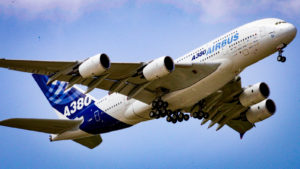
In the official statement of the European company supplemented with images, they illustrate the solutions they design, their features and main advantages, which, without exception, were born in the spirit of the zero-emission concept. Hydrogen propulsion, of course, will play a key role in making conventional fuels seem substitutable, and this would also meet the OECD’s recommendation for a transition to a clean green economy. Hydrogen (both as a synthetic fuel and as a primary energy source for civil aviation) seems to be a viable alternative, although it is still questionable to what extent this will be feasible.
In any case, Airbus now comes up with 3 different concepts that would satisfy different goals and needs. The first is a turbofan (gas turbine) solution that would carry between 120 and 200 passengers over a distance of up to 2,000 nautical miles, with a modified engine that would obviously use hydrogen. The second version is already based on a turboprop (propeller gas turbine) design for up to 100 passengers with a range of roughly 1,000 nautical miles for shorter voyages, while the third aircraft is an interesting design in which the wings actually merge with a thicker, wider fuselage for up to 200 passengers and also with a range of 2,000 nautical miles. The wide design allows for the modification of hydrogen placement, hopefully while preserving flight characteristics.
The company envisions the above different designs to allow them to create the ideal specimen that will be in service by the middle of the next decade, i.e. around 2035, at least according to current plans. Aviation was responsible for 2.4 percent of total CO2 emissions in 2018, so it won’t make a huge difference, yet it could help fight climate change.











